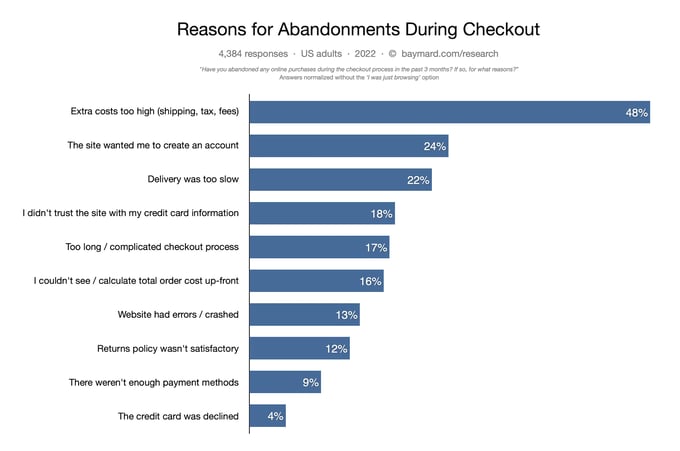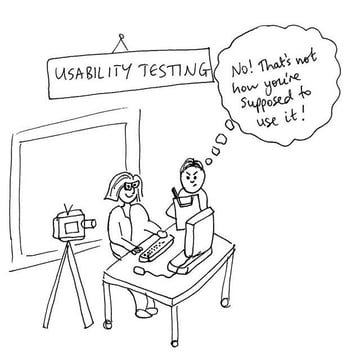The Washington Post speaks clearly: the pandemic has solidified the transition of shopping to online, and this clearly affects the hottest time for sales. We are talking about Black Friday, Cyber Monday and, of course, Christmas.
Andrea Saletti, an expert in Neuromarketing, writes:
"The overall purpose of any e-commerce? To help people make 2 choices. We make decisions every day based on how choice options are presented to us. These could be simple decisions, like choosing the sandwich that looks tastiest in a café window, or more complex ones, like evaluating which barbecue to buy for our garden. In all these mechanisms, the context in which we decided to buy makes a difference.
[...]
In fact, the choices the user makes are of 2 types:
- The product or service he wants to buy
- The place where that choice will be made: there or elsewhere."
What we want to do in this article is to give you tools to ensure that your customer does not choose elsewhere. Let's first look at the reasons why your customers abandon the shopping cart:

Need to create an account, checkout processes that take too long, ambiguity, security, bugs. What do all these reasons for customers abandoning your shopping cart have in common? Easy: the ability to be identified through functional and experiential testing.
The 5 tests your e-Commerce needs
Let's look at the 5 most common tests to find out what stops users from buying on your e-commerce.
The stress test
On Black Friday weekend and in the weeks before Christmas, your e-commerce will hopefully have a spike in users. Your site's traffic could even double or triple between late November and December, it goes without saying that stress testing is critical to understand the extent to which your e-commerce can function properly under stress.
To do such a test you have to take the e-store to the limit it can handle, and doing so will tell you whether it is ready for an overload of users or whether instead there are signs that hint at possible crush or slowdown.
According to research by Retail System Research (RSR), in the case of slow loading on an e-commerce:
- 76% of consumers do not start their shopping journey on a brand's website but rather on Google or Amazon
- 92% of online shoppers are frustrated with slow loading retail websites
- 87% of shoppers will not wait for a slow site to load and they want sites to load in under 4 seconds
- If a site takes too long to load 53% of shoppers say they leave and buy from a similar brand and 39% leave and buy from Amazon
- 67% of consumers shop via social media
Full research here.
This kind of performance stress testing cannot be improvised if it is to reflect as faithfully as possible actual load scenarios, thus providing realistic quantitative results. To this end, our Moviri partners' 20 years of experience in performance testing comes to our aid.
By performing stress tests, it is possible, in a short time, to identify bottlenecks and predict measurement interventions to prepare for extraordinary events. Through a preliminary analysis of your e-commerce system, Moviri will be able to create a suitable load to stress your system as realistically as possible. In this way, you will be able to actually simulate, hour by hour, what happens during Black Friday and analyze the behavior of all system components by acting jointly with the monitoring already available to you.
The functional test
Do you know how many browser and device combinations are out there? More than 24,000! Not counting the combinations of screen resolutions and operating systems. To make sure your ecommerce (site and app) works on all possible combinations, just run a functional test. By conducting it in crowdtesting, and thus involving real users with their real devices, you will be able to cover a very high number of combinations. Such a test is very complex to conduct in-lab: the development team would have to have a huge number of devices and a lot, a lot of time to test.
Bugs are the worst enemy of conversion; the numbers say so:
- 69% of online shoppers abandon the cart (Moosend)
- 84% of users don't return to try an app if it didn't work once (Techcrunch)
Test Automation
While the other tests mentioned in the article are tests done manually, this one, as the name implies, is automated. It is a Quality Assurance measure that has requirements to be carried out. The test must be:
Repeatable: it would not make sense to automate a test that is only run once
Opinion-free: the qualitative judgment can be made by testers in a manual test (as in thinking aloud, which we will discuss later)
Deterministic: when a function is deterministic, it means that the result is always the same whenever the same inputs are given
The advantages are reduced E2E testing time, exhaustive testing on known paths (be careful though: with automated testing you only test what you submit for testing!), the ability to test with each development, and multi-browser coverage.
In a special way such a test serves you when:
you have a high number of regressions (i.e., there are known bugs coming back into production)
you have lots of resources doing testing but few features released
when in testing you create a "bottleneck"
you need to test the entire flow as a whole (E2E)
.png?width=1216&name=CT%20+%20TA%20(1).png)
Localization testing
Unfortunately, a perfect translation of the site is not enough. There are things that cannot simply be translated from one e-commerce to another. I'm talking about cultural background, symbols, people's orientation to individualism or collectivism, whether or not they tolerate uncertainty and ambiguity, the types of fonts used, search engines, and, of course, the payment methods available.
This is why it is essential to test with real users in the country for which the e-commerce is intended. We did this, for example, for Bending Spoons with testers in the United States.
One company that knows this extremely well is McDonald's, which has a completely different site for each state. For example, these below are screenshots of the site in Italy and China (HomePage images as of 09/16/2020):
The Chinese site appears highly commercial, with a very high number of CTAs compared to the Italian version with only one button featured. Similarly, in our version the focus is on product, while in the Chinese version it is on offers.
Testing in Thinking Aloud
We talked about it in the article Thinking aloud: what it is and what digital product it is for: according to Jakob Nielsen it is the prince of usability tests.
In such a test, the user is asked to express his or her experience in words and out loud: what are his or her thoughts, actions, intentions, and difficulties encountered while interacting with a tested product or service.
To do this, we select from our Crowd of testers your buyer personas. These remotely (it is important that they are in real user conditions, so at home, on the subway, etc.) record videos that are analyzed by UX researchers. Downstream of the test, then, not only are the usability frictions found indicated but also suggestions for improvement.
Other benefits of thinking aloud:
- capturing preferences about the product and thus its effectiveness in real time (right during use!) and avoiding reliance on post-fruition surveys;
- pointing out and commenting on common misunderstandings about certain elements and making recommendations on a possible redesign;
- if used in the design phase, allow them to reassure UX designers about the goodness of the choices they have made, or help them make a choice (A/B testing);
- have a better understanding of the user's mental model, as a true "window into the soul."

These are the main tests your e-commerce needs before the holidays. At UNGUESS we do them in Crowdtesting, which means involving real users, testers and your buyer personas that we select from our Crowd. They come from all over the world and are connected to our platform, chosen and managed by our Customer Success Managers for each testing campaign. For UX testing, we also add researchers who analyze user-recorded videos and provide you with improvement directions for your e-commerce.
If you are the one to find the bugs and usability frictions, your potential customer will not be faced with the choice to buy elsewhere.
This type of performance stress testing, cannot be improvised, if it is to reflect as faithfully as possible the actual load scenarios, thus providing realistic quantitative results. To this end, our partners at Moviri's 20 years of experience in performance testing come to our aid.
